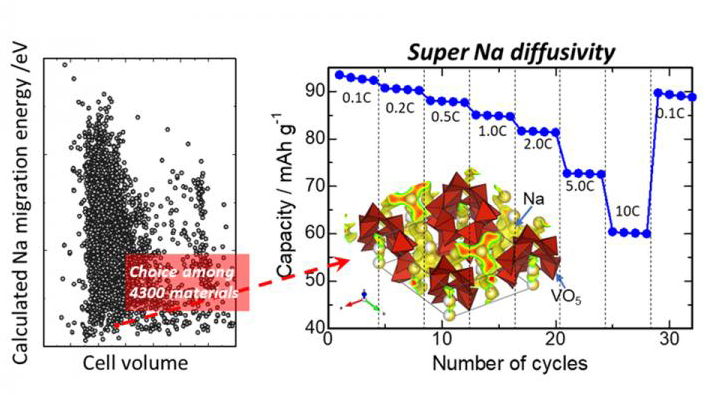
Researchers boost sodium-ion battery performance
Today, the electric vehicle – being a vital technology for fighting pollution in rural areas as well as ushering in clean and sustainable transport – is an important player in the efforts to solve the energy and environmental crises. Given increased demand for battery-powered devices and particularly electric cars, the need to find an alternative to lithium – one that is both cheap as well as abundant – is becoming urgent.
Sodium-ion batteries are an attractive alternative to lithium-based ion batteries due to several reasons. Sodium is not a limited resource – it is abundant in the earth’s crust as well as in seawater. Also, sodium-based components have a possibility to yield much faster charging time given the appropriate crystal structure design. However, sodium cannot be simply swapped with lithium used in the current battery materials, as it is a larger ion size and slightly different chemistry. Consequently, researchers are looking for the best material for the sodium ion battery among vast number of candidates by trial-and-error.
Scientists at NITech have found a rational and efficient way around this issue. After extracting about 4300 compounds from crystal structure database and following a high-throughput computation of these compounds, one of them yielded favorable results and was therefore a promising candidate as a sodium-ion battery component. The researchers identified that Na2V3O7 demonstrates desirable electrochemical performance as well as crystal and electronic structures. This compound shows fast charging performance, as it can be stably charged within 6 minutes. Further, the researchers demonstrated that the compound leads to long battery life as well as a short charging time.
The findings were published in Scientific Reports in November of 2018, headed by Naoto Tanibata, Ph.D., an Assistant Professor at the Department of Advanced Ceramics at NITech.
According to Dr. Tanibata: “Our aim was to tackle the biggest hurdle that large-scale batteries face in applications such as electric cars that heavily rely on long charge durations. We approached the issue via a search that would yield materials efficient enough to increase a battery’s rate performance”.
Despite the favorable characteristics and overall desired impact on sodium-ion batteries, the researchers found that Na2V3O7 underwent deterioration in the final charging stages, which limits the practical storage capacity to the half of theoretical one. As such, in their future experiments, the researchers aim to focus on improving the performance of this material so that it can remain stable throughout the entire duration of the charging stages.

“Our ultimate goal is to establish a method that will enable us to efficiently design battery materials via a combination of computational and experimental methods,” Dr. Tanibata adds.
The article “Nanotube-structured Na2V3O7 as a Cathode Material for Sodium-Ion Batteries with High-rate and Stable Cycle Performance” can be found at: https://dx.doi.org/10.1038/s41598-018-35608-9
www.nitech.ac.jp/eng/index.html
 If you enjoyed this article, you will like the following ones: don't miss them by subscribing to :
eeNews on Google News
If you enjoyed this article, you will like the following ones: don't miss them by subscribing to :
eeNews on Google News




